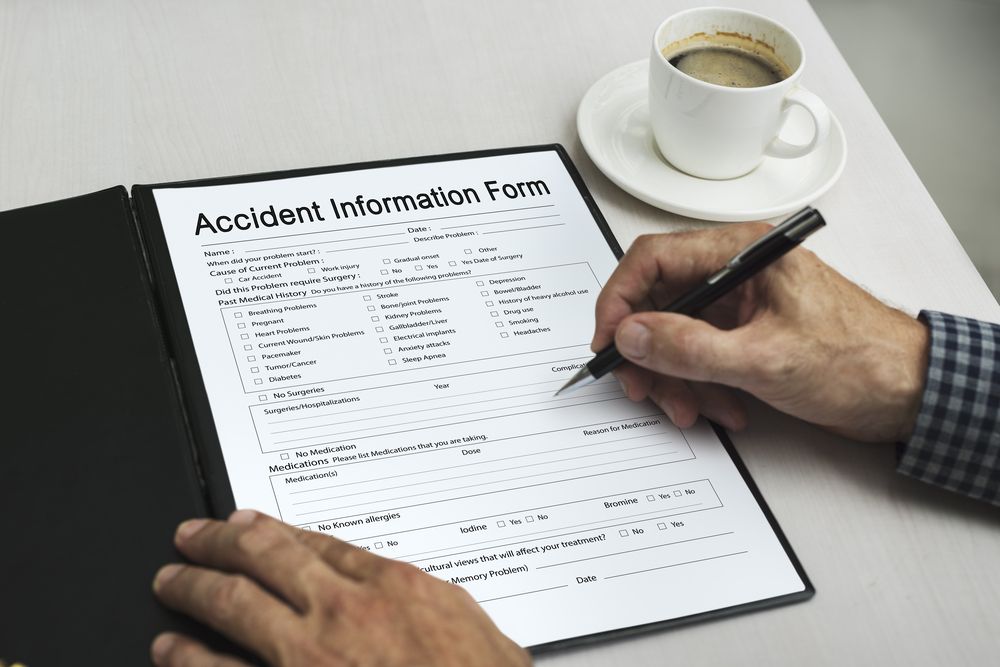After a car crash, a police officer comes to the scene, interviews the drivers, and writes a detailed Texas Peace Officer’s Crash Report (CR-3). Its importance cannot be overstated.
Why? It provides an unbiased account of the crash and is written by a trained expert. The insurance company and/or jury will use it to help decide what happened, who is at fault, and how much money to pay you.
The officer records the information about all of the people who were in the vehicles, such as seating position and severity of injuries. The officer also notes whether the drivers were impaired by drugs or alcohol and sometimes even the blood alcohol level — one of the most powerful ways to enlarge your recovery.
I have been reading these accident reports almost daily for almost 40 years and know what to look for. It is essential to get and scrutinize the report as soon as possible.
The report is often useful to you. But it can be inaccurate or just plain wrong and be kept out of evidence as hearsay. How this report is handled can make or break your case whether you are trying to obtain a high settlement or jury verdict – or any money at all.
I go over these reports with a highlighter. The items in orange to the right are some of the things I look for.
Identification and Location
The top section on page one gives basic information about the crash including the date, time and location.
If it happened at night, an injury lawyer immediately investigates if alcohol, drugs, drowsiness, or recklessness are involved.
Which road the wreck was on, traffic lights, street signs, stop signs, video cameras, speed limits, and other considerations are vital pieces of information.
For example, school zone, construction zone, and high speed interstate cases are treated much differently than low speed residential street, four way stop, or parking lot accidents.
Pinpointing the exact place and time of the accident is essential in reconstructing and locating evidence at the crash scene.
Lighting, weather, obstructions to vision, rush hour traffic, holidays, and other considerations must be factored into the evaluation.
Vehicle, Driver and Persons
There are two sections on the remainder of page one that ask for information about two drivers involved in the crash. The officer records the name, address, age, sex, race, driver’s license status, state, and type, level of injury, seating position and severity of injuries of the drivers. The officer also notes whether they were impaired by drugs or alcohol and sometimes even the blood alcohol level — one of the most powerful ways to get a large recovery of money in a DWI case.
All passengers are listed with some of this same information.
I use this information to immediately run a background search of the other driver(s), track down witnesses, and make an initial assessment of liability and damages.
Injury codes, if people were taken to hospitals, their seating positions, seat belt and child seat use, and other important information are listed here.
Property damage ratings to the vehicles on a scale of one to seven are important. More damage can obviously lead to big injuries.
If you file a lawsuit and subpoena the police officer to testify, he is not likely to remember your wreck since it happened a long time ago. Instead, he will refer to the report. If he testifies that the other driver was clearly at fault, describes what the at-fault driver admitted or how he acted (e.g. he might have slurred his words or smelled like he was drinking alcohol), and that you were injured and rushed by ambulance to the hospital, the jury will presumably award you more money.
Dispositions, Charges and Crash Narratives
The second page provides details about damages and fault including
- Disposition of injured/ killed section lists the hospitals where injured people were taken and the time of death of anybody who died in the crash.
- Charges provides citation numbers and charges of anybody who is ticketed or arrested in relation to the accident.
- Damages reports any other property damage besides vehicular damages.
- CMV applies to commercial vehicles like 18 wheelers or box trucks with weight, owner, size, plates, and VIN.
- Factors and conditions mentions vehicular defects the officer may have observed and issues concerning the roadway and environmental conditions.
- Narrative and diagram is one of the most important parts, as it contains a detailed summary of the crash and may also have drawings made. The officer’s opinion as to who is at fault can sometimes be admitted into evidence.
- Investigator section contains identifying information about the lead officer, who you will need to testify.
Additional Persons
The officer only uses the third and fourth page of the report if more people were injured. These drivers can make excellent eyewitnesses.
Why reports need to be scrutinized
The officer rarely, if ever, sees the crash happen. He must rely on what the drivers saw and tell him which can be self-serving and inexact. It is common for two drivers to have conflicting versions of how the collision happened. Or many times, one driver has already been taken by an ambulance to the emergency room and never gets to explain what happened or is in shock, dazed, or unconscious.
Unless there is an independent eyewitness, the officer may not know which driver to believe.
If you believe that the report is not correct, you have the right to dispute it. We can help you do this and are often successful in making the officer change the report.
I have seen many cases where the report was filled out incorrectly or the officer writes down one thing at the scene and testifies to a different scenario later. I took the deposition last year of a Fort Worth police officer who at the scene wrote that a man who was killed was wearing his seat belt and was not speeding, yet in her deposition said that he was not possibly wearing the belt and may have been speeding. I proved that she was wrong, with the help of my accident reconstruction expert and another inspection of his vehicle at the pound.
How to get a copy of your report
My office will immediately obtain your report at no charge to you. Some cities make the reports available online and some require that it be picked up in person. Department of Public Service reports can take up to 10 days to obtain and must be picked up at a district office.
I will discuss how it can help (or hurt) you during a free no obligation consultation.
These reports are required under the Texas Transportation Code, Section 550.062, if property damage appears to be at least $1,000.00. I have seen far too many cases where visible damage was much higher than that (a new bumper can cost that) and the officer unfortunately refuses to write a report. Instead, he merely hands the drivers useless “blue sheets” to file themselves with the Department of Public Safety. We can help you get the officer to fill out the required report.
Contact the skilled professionals at Berenson Injury Law if you have been involved in a car or truck collision.




